With hiring strategy at an inflection point, sourcing the right talent is in the spotlight. Given the short supply of talent, the employee-employer equation has changed drastically. As sourcing high quality talent becomes increasingly difficult, here are some talent acquisition strategies to help you nail the effort.
Half way into 2022 and we are staring at a seminal moment—hiring strategy is at an inflection point. The employee-employer relationship is evolving in unimaginable ways, putting to test expectations on both sides. As both ends of the spectrum grapple with uncertainties, especially now with the fears of a recession growing, it has brought to the fore more than ever before, the significance of attracting the best talent. While we may approach this question from the employer’s perspective, it is a highly challenging task – and an equally tricky one. The answer lies somewhere mid-way between will employers seek resilience and adaptability in employees, or will employees prefer organizations that prioritize support and their well being.
Sourcing the right talent, as a key focus area of hiring strategy, couldn’t have been more in the spotlight. According to The 2022 Global Talent Shortage Survey by ManpowerGroup, we are witnessing a short supply of epic proportions: 3 in 4 employers reported facing difficulty in hiring, with talent shortage surging to a 16-year high in 2022. Employers, irrespective of the sector, are finding it difficult to attract candidates with the right balance of skills and human strengths.
If this means anything, it is that employers are definitely losing sleep trying to figure out how to source the top talent in this environment and develop effective talent acquisition strategies.
There is a tectonic shift in the perception of employees – from security of job and fairly reasonable compensation to the growing need to be valued – the desire to see the employer invest in what an employee values.
The other side of the coin, therefore, as succinctly put by thought leader Josh Bersin, is that companies need to understand “people are an appreciating asset. If you invest in them over time, the return gets higher every year”.
1. Articulate value proposition to focus on culture & growth for an effective hiring strategy
Work around offering a human-centered leadership which takes a broader view of employees/prospective employees. If you are looking to reinvent your hiring strategy, this is probably the best place to start.
As a first step in any recruitment strategy, it is important to understand what an employee or a prospective employee may want. Expectations have changed in the current scenario amid rising awareness and changes brought about by external factors such as the pandemic. People want more work-life balance, especially in the light of remote working options, flexibility, more value/satisfaction from work.
You need to clearly articulate the mission and vision of your organization – to convey that profitability is not the only purpose. More important, how will you be delivering on these counts? What steps will you take to ensure symbiotic growth of an employee and the organization?
The other question in talent acquisition strategies is around the scope of growth.
How will your organization work to ensure growth; do you have the right “career path-ing” for development, and impart relevant skills and training? Data shows that many people are not leaving their jobs to just sit idle – they cannot anyway. They are rather looking to reinvent their careers. Does your firm cater to the growing trend?
Salary is a top factor in employee hiring. Willis Towers Watson’s 2022 Global Benefits Attitudes Survey shows that of the 44% of workers seeking new jobs, higher salary was a criterion for over half of them in looking for a new job. The salary you offer, is it in line with their expectations or in line with industry standards and does it justify the talent they bring? It’s all about the need to convince and be convinced.
How do you define culture – a third one. This is particularly relevant for diversity hiring strategies.
If it is the conventional definition, it is time to align it more along goals, both project-based and short/long-term.
You need to reset for being relatable, especially now amid the emergence of new skills (such as around listening, flexibility, adaptability) in a new world of work that is marked by personalization.
In short, when you build a clear strategy around these principles and come out in the open about it, you indicate the value proposition for the employee. This is a key question people ask around job searches and recruitment process.
2. Stress upon flexibility, inclusivity & sustainability to lend credence to recruitment strategy
An important trait of well-informed candidates is that they will always go for an all-inclusive organization. People value workplaces that are diverse, connect with social causes, and work toward inclusion and sustainability.
Creating an engaging environment is an important aspect of a holistic talent acquisition plan. Building dedicated employee engagement teams by recruiting internal staff from across functions is a great way to address diverse concerns and build participation as well as interaction.
Given the focus on retention and engagement in developing an effective hiring strategy, how you make your workplace more engaging and fun will determine what talent you attract.
Flexibility at the workplace is a key consideration among hires. Latest data from the McKinsey American Opportunity Survey reveals how workers relate to work from home or a flexible arrangement and what it means to them. Flexible working arrangement is the third-most-preferred reason for seeking new employment opportunities, after higher pay and better career options.
This information is key for HR leadership to understand the evolution of the working world and accordingly develop prudent diversity hiring strategies. To rope in high performers and top professionals, as an organization, you must know the preference of the talent pool for flexible arrangements. Accordingly, you can develop policies, train your staff and make the right investment in technology to build a more integrated workplace for those working remotely.
3. Broaden recruitment and make talent acquisition plan more forward-looking
Along with skillset requirement, the workplace has changed in many ways. Jobs are not always full-time – gigs are on the rise; there’s part-time work.
If your recruitment or hiring strategy is hardwired around the old stereotype, your efforts at hiring will fall flat on the face. In the light of the current dynamics, you need to create specific talent acquisition strategies for each type of engagement depending on the requirement.
You could start right from the fundamental steps such as posting on social media to developing an employee referral program; going for sponsored jobs; attending recruitment-specific or other events from where you can network with prospective candidates; coming up with highly attractive job descriptions and posts; strategizing around re-hiring of former employees; re-thinking the platforms you approach for hiring (degree-based may not always be relevant, or for that matter places with repute and pedigree) and smartening the interview process – one of the ways could be to include the best-in-class psychometric tests, or peer-to-peer interview to gauge the candidature.
4. Include thought leadership in talent acquisition strategies
This is especially relevant when devising a recruitment strategy aimed at senior candidates.
It works both ways. You need to develop thought leadership to attract top level candidates in this category, and likewise develop an understanding and search for thought leaders that can add significant value at top roles. This will dictate the kind of conversations you have and the insights you share. Accordingly, you can be better equipped to try out new markets and opportunities.
The trend is on the rise. According to ThoughtLDR, which largely works with technology companies in the US and UK, more than 80% of recruiters surveyed said employers prioritize thought leadership more now than before the pandemic. A good way to assess is to scan the profiles on popular platforms for an individual’s thought leadership content.
Therefore, if you are looking to gain an edge in executive search and build an effective hiring strategy, or wish to transform your perception in the eyes of customers, you cannot ignore the role of thought leadership in recruitment strategy.
5. Develop existing resources as brand ambassadors
The other side of the coin of hiring is not losing your valued employees, especially now, with hiring becoming insanely difficult and talent acquisition strategies being put to test. This will serve a twofold purpose. First, of course, it will facilitate internal mobility and prevent attrition. Second, very important, growth will motivate them to spread the word outside, for instance, on social media platforms and review sites. This is a highly effective way to maintain your brand. Potential job seekers scan these platforms and sites – this is where they pick up the conversation from your employees, and form opinions. About 70–75% of people consider reputation around prospects, culture and benefits a key metric while applying for a job.
Given the tough competition for talent today, you must look at building a brand that is talked about in a positive way and gets potential candidates excited. Pricing in this aspect will strengthen your talent acquisition plan.
Invest in your employees to lend weight to your hiring strategy. Develop them either by reskilling or upskilling, or simply by showing that you value them. They are the faces behind your products or services. Once you get them to set the context right, the reach of your brand will extend automatically and you will be able to lure the best talent.
6. Match recruiting automation with human touch
There is no denying that you have to embrace technology and automation in your hiring strategy. Recruiting automation eliminates outdated manual processes and improves efficiency. Growth in intelligent sourcing and interviewing is strong. However, what one cannot forget is that hiring at the end of the day is a human resource function, and there are limitations to which automation can substitute human intervention.
Recruiting automation should be used as a supplement to free up the bandwidth for recruiters for strategizing and decision-making, and make hiring incisive.
Plus, human touch is necessary to provide seamless experience to the candidate. Only when you have in-depth interactions, you will understand what they want – more importantly, help them connect with what you can offer and set expectations right at the start.
To conclude
In attracting top talent, strategies abound. You can choose or modify any in line with your requirement. Most organizations are aware of the need to rethink their hiring strategy and are doing that. But, at the core, it is about having the right and real conversation with your prospective employees. Direct conversations are not new; just that they are more relevant now in recruitment strategy than ever before.
Why?
Because the way of working has changed, led by remote/hybrid work and digitalization – forever, and with it, the landscape for recruitment and availability of candidates. Interestingly, markets are hotter today, the talent pool is diverse and so is the openness of employers to recruit (as per an October 2021 Hiring Trends report by Indeed, 94% of employers were willing to hire outside local markets, while 77% were keen on considering remote workers). In this scenario, hiring should have been easy – but it is not.
Reason: the perception of work and workplace has changed, underlining a socio-economic shift. In this environment, both employers and employees need to be honest and upfront about what they want. From the employers’ perspective, it rests on having open conversations about what your firm can offer; on what counts can you deliver and on what it may not be possible. Candidates appreciate frankness in setting priorities. Transparency in conversation will also help you determine if the candidate is a culture fit.
So, if you are looking to optimize recruitment and have that right conversation with your hire, start by listening and observing as the first step of your hiring strategy. Or you will run the risk of losing out on high quality talent.


